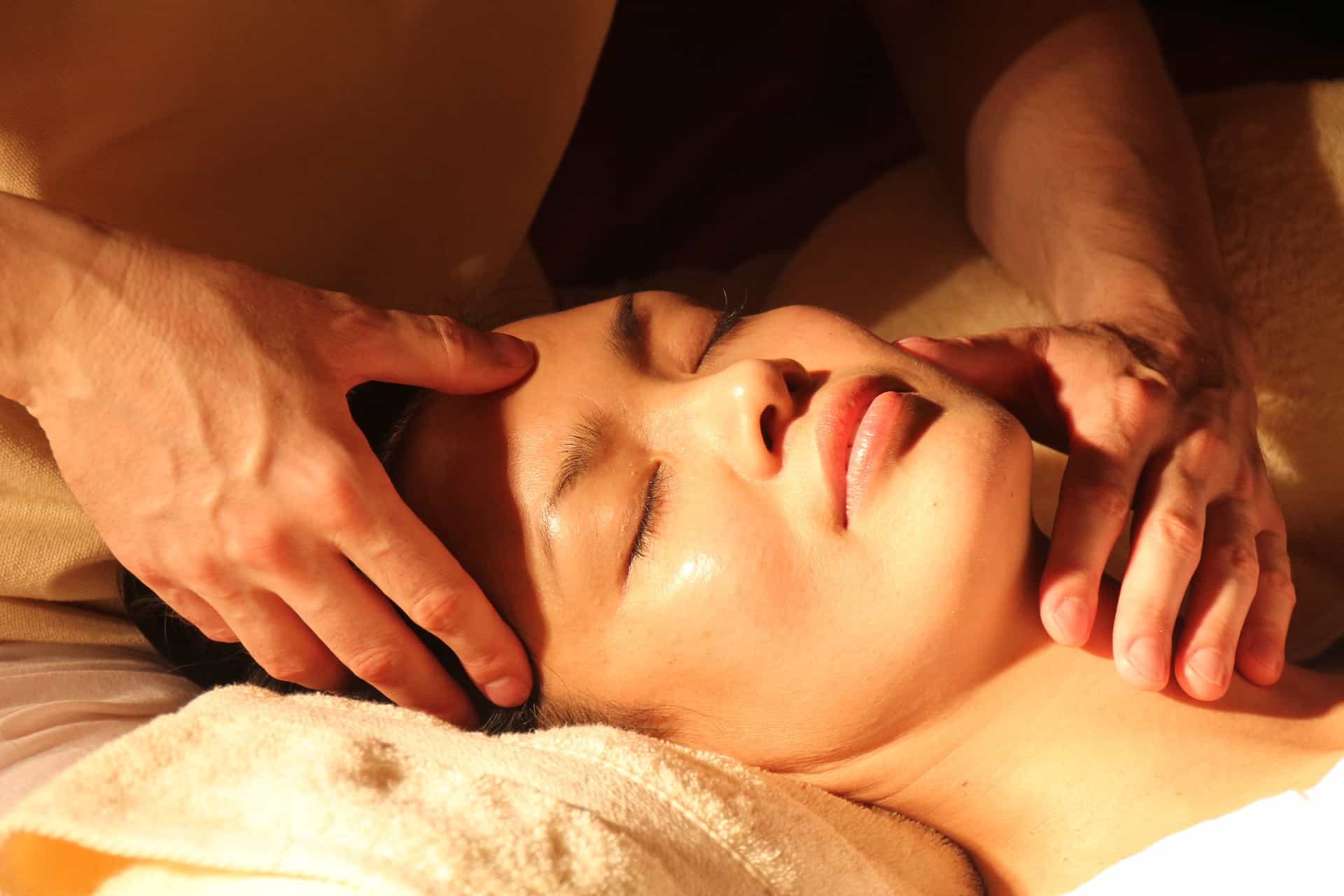You’re probably familiar with acupuncture, but if you’re looking for a drug- and needle-free way to address discomfort, stress, and even upset stomachs, acupressure—an “ancient healing art [that uses] the fingers to gradually press key healing points, which stimulate the body’s natural self-curative abilities”—might be worth incorporating into your wellness routine.
Acupressure and Acupuncture: How They’re Related and Where They Diverge
Acupressure stems from the same theory of pressure points and the same foundations as acupuncture but differs slightly in ways that may make it more accessible at home and on the go. The two methodologies use the same pressure points, but while acupuncture does this with needles, acupressure does not. Acupressure, then, is ideal for self-treatment due to its convenience Developed in Asia over 5,000 years ago as a key practice within Traditional Chinese Medicine (TCM), there are now hundreds of acupressure applications recognized for their ability to heal an expanding variety of ailments. The points are positioned along energetic channels in the body called meridians. If you’re familiar with chakras, then chances are you can already recognize these sacred lines of energy! According to TCM and yogic philosophy, dis-ease and ultimately disease can arise when these meridians are not properly balanced. The exceedingly precise pressure applied to specific points throughout the body during acupressure works to unblock our energetic channels, which is said to promote a cascade of physical and mental benefits. When one of the many pressure points is stimulated, it can relieve pain, balance the body’s energy (or qi), reduce muscular tension, increase circulation, and enable deepened relaxation. There are 361 classical acupoints that fall along 14 meridians, plus an additional 48 points and 8 extra meridians according to a World Health Organization Scientific Group report published to support the teaching, research, and clinical practice of acupuncture. Since it can leverage all these acupoints and energetic channels, it’s easy to see why acupressure offers both preventative and diagnostic options for a seemingly endless list of health conditions. Common diagnoses that respond well to acupressure include chronic fatigue, fibromyalgia, migraines, hormonal imbalances, emotional imbalances, and even trauma and anxiety.
Test out these acupoints for yourself.
To support and promote healing and relief, acupressure involves the application of firm pressure to the points near an aggravated area of the body. Many times, the points will be within close proximity of the complaint, but it’s also helpful to note that there may be times when distal points are used on the opposite side of a meridian. For example, forehead and scalp points are often used for individuals suffering with chronic headaches. Yet, there are times when a practitioner may advise using points in the foot for the same complaint. Who knew! Because acupressure techniques are easy to learn, individuals looking to upgrade their wellness regimens can play around with stimulating sequences of points and noting the effects. Find what works best for you. As a general rule of thumb, apply steady pressure to a given point using the finger or hand positioning prescribed—for example, the middle finger, which is longest and strongest—for at least three to five minutes for optimal results. Looking for an extra boost of good juju? Incorporate diaphragmatic breathing, deep-belly breathing, or dirgha pranayama during those passing minutes.
Here are a few common points to remember.
Li 11 – Pool at the Crook
This point is located in the crook of your elbow. Hold your right arm at a 90 degree angle in front of your body, positioning it as if it was in a sling. Turn the right palm up and place the left thumb at the outside end of the elbow crease. Press firmly and hold; then switch arms. This application will help to relieve arm, shoulder, or elbow pain and regulate the digestive tract.
Li 4 – Adjoining Valley
Position your right hand with the palm down. Squeeze your thumb and fingers together, taking note of the mound of skin popping up in the webbing between the base of your index finger and thumb. Relax your right hand and use your left hand to pinch this point (thumb above, index finger below). Hold and switch hands. This application leverages one of the most popular and important points! It can relieve headaches and relaxes muscular tension while encouraging healthy intestinal function.
Lv 3 – Bigger Rushing
This point is located on top of the foot. Place the tip of your index finger at the webbing between your big and second toes. Slide your finger up your foot until you feel an indentation. It should be about half an inch above the webbing. Push down into the point; if you can do so with both feet at the same time, even better! This point is noted for its ability to facilitate decongestion.
Products We Love:



